
|  |  |  Editorials | Issues Editorials | Issues  
8 Bloodthirsty Dictators Who Benefited from U.S. Aid
 Dan Berry - Jotter of a Rotter Dan Berry - Jotter of a Rotter
go to original
February 10, 2010

Many of the world's most repressive dictators have been friends of America. Tyrants, torturers, killers, and sundry dictators and corrupt puppet-presidents have been aided, supported, and rewarded handsomely for their loyalty to US interests. Traditional dictators seize control through force, while constitutional dictators hold office through voting fraud or severely restricted elections, and are frequently puppets and apologists for the military juntas, which control the ballot boxes. In any case, none have been democratically elected by the majority of their people in fair and open elections.

They are democratic America's undemocratic allies. They may rise to power through bloody ClA-backed coups and rule by terror and torture. Their troops may receive training or advice from the CIA and other US agencies. US military aid and weapons sales often strengthen their armies and guarantee their hold on power. Unwavering "anti-communism" and a willingness to provide unhampered access for American business interests to exploit their countries' natural resources and cheap labor are the excuses for their repression, and the primary reason the US government supports them. They may be linked internationalIy to extreme right-wing groups such as the World Anti-Communist League, and some have had strong Nazi affiliations and have offered sanctuary to WWll Nazi war criminals.

They usually grow rich, while their countries' economies deteriorate and the majority of their people live in poverty. US tax dollars and US-backed loans have made billionaires of some, while others are international drug dealers who also collect CIA paychecks. Rarely are they called to account for their crimes. And rarely still, is the US government held responsible for supporting and protecting some of the worst human rights violators in the world.

8. IAN SMITH – Prime Minister of Rhodesia

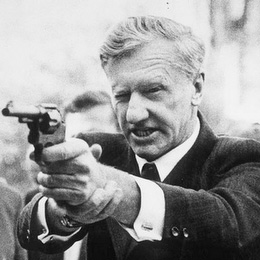 Ian Smith promised the whites who elected him Prime Minister of Rhodesia in 1982 that he would keep Rhodesia white, at any cost. To stop the black guerrilla fighters trying to overthrow his regime, Smith rationed food for Africans whom he believed were feeding the guerrillas. This cruel measure only served to starve the already undernourished black population. Studies found that over 90% of Rhodesia's black children were malnourished and nutritional deficiencies were the major cause of infant death. Smith rounded up blacks into concentration camps he called "protective" villages. Believing that ignorant people were less likely to revolt, he cut funding for black education, spending $5 on each black child compared to $80 on each white child. His all white Parliament passed a law protecting officials who took actions for the suppression of "terrorism", enabling the police and military to commit atrocities. An international trade boycott against Rhodesia arose, but while the US publicly condemned the government, it continued to do business there. In 1971, President Nixon lifted the chrome embargo against Rhodesia at a time when there was a surplus of chrome in the US. Blacks were eventually given the right to vote for some officials, but the opposition to Smith's government grew so strong that he was ultimately forced to give up some power to blacks. In 1979, Rhodesia became Zimbabwe, a country primarily ruled by blacks. Ian Smith promised the whites who elected him Prime Minister of Rhodesia in 1982 that he would keep Rhodesia white, at any cost. To stop the black guerrilla fighters trying to overthrow his regime, Smith rationed food for Africans whom he believed were feeding the guerrillas. This cruel measure only served to starve the already undernourished black population. Studies found that over 90% of Rhodesia's black children were malnourished and nutritional deficiencies were the major cause of infant death. Smith rounded up blacks into concentration camps he called "protective" villages. Believing that ignorant people were less likely to revolt, he cut funding for black education, spending $5 on each black child compared to $80 on each white child. His all white Parliament passed a law protecting officials who took actions for the suppression of "terrorism", enabling the police and military to commit atrocities. An international trade boycott against Rhodesia arose, but while the US publicly condemned the government, it continued to do business there. In 1971, President Nixon lifted the chrome embargo against Rhodesia at a time when there was a surplus of chrome in the US. Blacks were eventually given the right to vote for some officials, but the opposition to Smith's government grew so strong that he was ultimately forced to give up some power to blacks. In 1979, Rhodesia became Zimbabwe, a country primarily ruled by blacks.

7. FERDINAND MARCOS – President of the Philippines

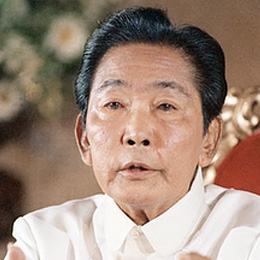 Ferdinand Marcos began his career with a bang. At age 21, convicted of gunning down Julio Nalundasan, his father's victorious opponent in the Philippines first national elections, he went to prison. He was later release by a Supreme Court Justice who, like Marcos and his father, was a Nazi collaborator. Despite Marcos's record as murderer, fake WWll hero and Nazi agent, he was elected Philippine President in 1965. Under Marcos, the Philippine national debt grew from $2 billion to $30 billion, but US corporations in the Philippines prospered, perhaps explaining why the US didn't protest Marcos's imposition of martial law in 1972. The Marcoses enjoyed a luxurious lifestyle, and they salted away billions of dollars in the course of their US-backed rule between 1965 and 1986. Ferdinand Marcos began his career with a bang. At age 21, convicted of gunning down Julio Nalundasan, his father's victorious opponent in the Philippines first national elections, he went to prison. He was later release by a Supreme Court Justice who, like Marcos and his father, was a Nazi collaborator. Despite Marcos's record as murderer, fake WWll hero and Nazi agent, he was elected Philippine President in 1965. Under Marcos, the Philippine national debt grew from $2 billion to $30 billion, but US corporations in the Philippines prospered, perhaps explaining why the US didn't protest Marcos's imposition of martial law in 1972. The Marcoses enjoyed a luxurious lifestyle, and they salted away billions of dollars in the course of their US-backed rule between 1965 and 1986.

The Carter Administration engineered an $88 million World Bank loan to Marcos, increased military aid to him by 300%, and called him a "soft dictator". But a 1976 Amnesty International report identified 88 government torturers, and stated that alleged subversives had their heads slammed into walls, their genitals and pubic hair torched, and were beaten with clubs, fists, bottles, and rifle butts. By 1977, the armed forces had quadrupled and over 60,000 Filipinos had been arrested for political reasons. Yet, in 1981, Vice President George Bush praised Marcos for his "adherence to democratic principals and to the democratic processes". Marcos was overthrown in 1986 by followers of Corazon Aquino, widow of an assassinated opposition leader.

Ferdinand and Imelda fled to Hawaii, only to be indicted in 1988 for fraud and tax evasion. Marcos died in 1989. Imelda returned to the Philippines in 1991 and stood unsuccessfully in the Presidential elections of 1992. In 1993 she was sentenced to 18 years imprisonment for criminal graft and to other long sentences for corruption. She is still free while she appeals. She was elected to Congress in May 1995. Meanwhile, in it attempts to recover the lost Marcos billions from Swiss bank accounts and other shadier locations the Philippines Government has, after paying its US lawyers, recovered the princely sum of $2,000.

6. COLONEL HUGO BANZER – President of Bolivia

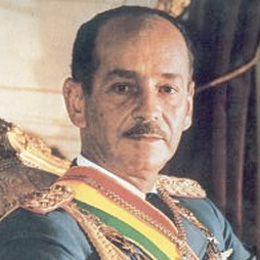 In 1970, in Bolivia, when then-President Juan Jose Torres nationalized Gulf Oil properties and tin mines owned by US interests, and tried to establish friendly relations with Cuba and the Soviet Union, he was playing with fire. The coup to overthrow Torres, led by US-trained officer and Gulf Oil beneficiary Hugo Banzer, had direct support from Washington. When Banzer's forces had a breakdown in radio communications, US Air Force radio was placed at their disposal. Once in power, Banzer began a reign of terror. Schools were shut down as hotbeds of political subversive activity. Within two years, 2,000 people were arrested and tortured without trial. As in Paraguay, Argentina and Brazil, the native Indians were ordered off their land and deprived of tribal identity. Tens-of-thousands of white South Africans were enticed to immigrate with promises of the land stolen from the Indians, with a goal of creating a white Bolivia. When Catholic clergy tried to aid the Indians, the regime, with CIA help, launched terrorist attacks against them, and this "Banzer Plan" became a model for similar anti-Catholic actions throughout Latin America. In 1970, in Bolivia, when then-President Juan Jose Torres nationalized Gulf Oil properties and tin mines owned by US interests, and tried to establish friendly relations with Cuba and the Soviet Union, he was playing with fire. The coup to overthrow Torres, led by US-trained officer and Gulf Oil beneficiary Hugo Banzer, had direct support from Washington. When Banzer's forces had a breakdown in radio communications, US Air Force radio was placed at their disposal. Once in power, Banzer began a reign of terror. Schools were shut down as hotbeds of political subversive activity. Within two years, 2,000 people were arrested and tortured without trial. As in Paraguay, Argentina and Brazil, the native Indians were ordered off their land and deprived of tribal identity. Tens-of-thousands of white South Africans were enticed to immigrate with promises of the land stolen from the Indians, with a goal of creating a white Bolivia. When Catholic clergy tried to aid the Indians, the regime, with CIA help, launched terrorist attacks against them, and this "Banzer Plan" became a model for similar anti-Catholic actions throughout Latin America.

5. VINICIO CEREZO – President of Guatemala

 According to Amnesty International, arbitrary arrest, torture, disappearance, and political killings were everyday realities for Guatemalans during decades of US financed military dictatorship. In January 1986, Christian Democrat leader Vinicio Cerezo was elected President and said he had "the political will to respect the rights of man", but it didn't take long to find out that his political will was irrelevant in the face of Guatemala's well-oiled military machine. Hopes for change were dashed when Cerezo announced that Guatemala would continue to provide amnesty for all past military offenses committed from General Elrain Rios Montt's coup in 1982 through the 1986 elections. Although Ronald Reagan's State Department asserted "there has not been a single clear-cut case of political killing, within months of Cerezo's inauguration, opposition leaders attributed 56 murders to security forces and death squads, while Americas Watch claimed that "throughout 1986, violent killings were reported in the Guatemalan press at the rate of 100 per month". Altogether, Americas Watch says, tens-of-thousands were killed and 400 rural villages were destroyed by government death squads during Reagan's term in office. Colonel D'Jalma Dominguez, former army spokesman, explains "For convenience sake a civilian government is preferable, such as the one we have now. If anything goes wrong, only the Christian Democrats will get the blame. It's better to remain outside. The real power will not be lost." Today, the real power still resides with the military. According to Amnesty International, arbitrary arrest, torture, disappearance, and political killings were everyday realities for Guatemalans during decades of US financed military dictatorship. In January 1986, Christian Democrat leader Vinicio Cerezo was elected President and said he had "the political will to respect the rights of man", but it didn't take long to find out that his political will was irrelevant in the face of Guatemala's well-oiled military machine. Hopes for change were dashed when Cerezo announced that Guatemala would continue to provide amnesty for all past military offenses committed from General Elrain Rios Montt's coup in 1982 through the 1986 elections. Although Ronald Reagan's State Department asserted "there has not been a single clear-cut case of political killing, within months of Cerezo's inauguration, opposition leaders attributed 56 murders to security forces and death squads, while Americas Watch claimed that "throughout 1986, violent killings were reported in the Guatemalan press at the rate of 100 per month". Altogether, Americas Watch says, tens-of-thousands were killed and 400 rural villages were destroyed by government death squads during Reagan's term in office. Colonel D'Jalma Dominguez, former army spokesman, explains "For convenience sake a civilian government is preferable, such as the one we have now. If anything goes wrong, only the Christian Democrats will get the blame. It's better to remain outside. The real power will not be lost." Today, the real power still resides with the military.

4. GENERAL AUGUSTO PINOCHET – President of Chile

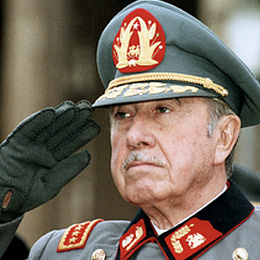 Augusto Pinochet deposed democratically elected President Salvador Allende in 1973, and buried Chile's 150 year old democracy. "Democracy is the breeding ground of communism", says Pinochet. The bloody coup, in which Allende was assassinated, was carefully managed by the CIA and ITT. Tens of thousands of Chileans have been tortured, killed, and exiled since then, according to Amnesty International. A U.S. congressional delegation was told by inmates at San Miguel Prison that they had been tortured by "the application of electric shock, simultaneous blows to the ears, cigarette burns, and simulated executions by firing squads." Despite Chile's bad human rights record, the U.S. government continued to support Pinochet with international loans. Even the state-sponsored car-bomb assassination of Chile's former Ambassador to the U.S., Orlando Letelier, did not convince the U.S. to break with Pinochet. In 1988 a plebiscite refused to extend Pinochet's rule, so he altered the constitution to reduce the powers of the incoming elected President, and left himself head of the armed forces. All the other South American dictators are gone but Pinochet has found the perfect solution: Chile now has the squeaky-clean sheen of democracy yet he still has his finger on the trigger. Augusto Pinochet deposed democratically elected President Salvador Allende in 1973, and buried Chile's 150 year old democracy. "Democracy is the breeding ground of communism", says Pinochet. The bloody coup, in which Allende was assassinated, was carefully managed by the CIA and ITT. Tens of thousands of Chileans have been tortured, killed, and exiled since then, according to Amnesty International. A U.S. congressional delegation was told by inmates at San Miguel Prison that they had been tortured by "the application of electric shock, simultaneous blows to the ears, cigarette burns, and simulated executions by firing squads." Despite Chile's bad human rights record, the U.S. government continued to support Pinochet with international loans. Even the state-sponsored car-bomb assassination of Chile's former Ambassador to the U.S., Orlando Letelier, did not convince the U.S. to break with Pinochet. In 1988 a plebiscite refused to extend Pinochet's rule, so he altered the constitution to reduce the powers of the incoming elected President, and left himself head of the armed forces. All the other South American dictators are gone but Pinochet has found the perfect solution: Chile now has the squeaky-clean sheen of democracy yet he still has his finger on the trigger.

3. IDI AMIN – General of Uganda

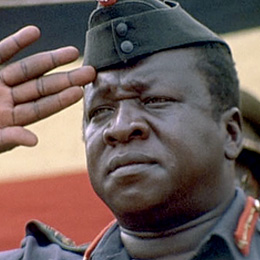 Amin was one of the most notorious of Africa's post-independence dictators. A former heavyweight boxing champion in Uganda and a non-commissioned officer in the British Army there, Amin caught the attention of his superiors because of his efficient management of concentration camps in Kenya during the Mau Mau rebellion in the 1950s, where he earned the title of "The Strangler". Because of his loyalty to Britain and his strongly anti-communist stance, Amin was picked by the British to replace the elected Ugandan government in a 1971 coup. While in power, he earned a reputation as a "clown" in some circles in the West, but he was no joke at home. Amin brutalized his people with British and US military aid and with Israeli and CIA training of his troops. The body count of his friends, the clergy, soldiers, and ordinary Ugandans rose daily, but the West ignored his cruelty. As he continued to demand more aid and sophisticated weapons, he finally lost support. In 1979, his quest for more power lead him to invade Tanzania. In retaliation, he was overthrown by an invading Tanzanian / Ugandan army. Amin fled to Saudi Arabia, where he now lives a quiet life in a modest villa outside Jeddah, looking after his goats and chickens and cultivating his vegetable garden. Traditional Arab garb has replaced the bemedalled Field Marshal's uniform of his heyday. Amin was one of the most notorious of Africa's post-independence dictators. A former heavyweight boxing champion in Uganda and a non-commissioned officer in the British Army there, Amin caught the attention of his superiors because of his efficient management of concentration camps in Kenya during the Mau Mau rebellion in the 1950s, where he earned the title of "The Strangler". Because of his loyalty to Britain and his strongly anti-communist stance, Amin was picked by the British to replace the elected Ugandan government in a 1971 coup. While in power, he earned a reputation as a "clown" in some circles in the West, but he was no joke at home. Amin brutalized his people with British and US military aid and with Israeli and CIA training of his troops. The body count of his friends, the clergy, soldiers, and ordinary Ugandans rose daily, but the West ignored his cruelty. As he continued to demand more aid and sophisticated weapons, he finally lost support. In 1979, his quest for more power lead him to invade Tanzania. In retaliation, he was overthrown by an invading Tanzanian / Ugandan army. Amin fled to Saudi Arabia, where he now lives a quiet life in a modest villa outside Jeddah, looking after his goats and chickens and cultivating his vegetable garden. Traditional Arab garb has replaced the bemedalled Field Marshal's uniform of his heyday.

2. POL POT – Commander of the Khmer Rouge

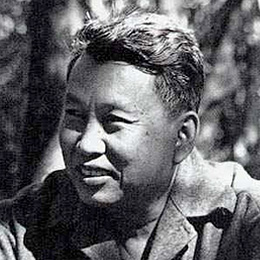 The bombing of Cambodia by the US from 1969 to 1972, left 600,000 civilians dead, millions of refugees, tens-of-thousands dying from disease and starvation, and the Cambodian economy and culture in ruins. Cambodians blamed the US and the puppet regime of Lon Nol for the country's destruction, and gradually sided with the guerrilla army of the Khmer Rouge led by Pol Pot, which finally defeated Lon Nol, and took power in April, 1975. Once in power, Pol Pot emptied the cities, forcing the people into the countryside. Virtually all educated people were killed and more than 1.5 million people perished in this "holocaust". Only when the Khmer Rouge was ousted by Vietnam in 1979, did the terror stop. Washington took steps to preserve the Khmer Rouge as a counter force to the Vietnamese. International relief agencies were pressured by the US to provide food and humanitarian assistance to the Khmer Rouge, which had fled to Thailand, and the US sent military aid as well. In 1982, in an effort to isolate the Vietnamese, the US forced together the three contending anti-Vietnamese groups, insisting that the Khmer Rouge be part of the negotiations. Cambodia continues to suffer from the devastation produced by both the US bombing and the Khmer Rouge atrocities. Pol Pot is considered to still be the power behind the Khmer Rouge, which has a strong presence in Cambodia today, thanks to the US. The bombing of Cambodia by the US from 1969 to 1972, left 600,000 civilians dead, millions of refugees, tens-of-thousands dying from disease and starvation, and the Cambodian economy and culture in ruins. Cambodians blamed the US and the puppet regime of Lon Nol for the country's destruction, and gradually sided with the guerrilla army of the Khmer Rouge led by Pol Pot, which finally defeated Lon Nol, and took power in April, 1975. Once in power, Pol Pot emptied the cities, forcing the people into the countryside. Virtually all educated people were killed and more than 1.5 million people perished in this "holocaust". Only when the Khmer Rouge was ousted by Vietnam in 1979, did the terror stop. Washington took steps to preserve the Khmer Rouge as a counter force to the Vietnamese. International relief agencies were pressured by the US to provide food and humanitarian assistance to the Khmer Rouge, which had fled to Thailand, and the US sent military aid as well. In 1982, in an effort to isolate the Vietnamese, the US forced together the three contending anti-Vietnamese groups, insisting that the Khmer Rouge be part of the negotiations. Cambodia continues to suffer from the devastation produced by both the US bombing and the Khmer Rouge atrocities. Pol Pot is considered to still be the power behind the Khmer Rouge, which has a strong presence in Cambodia today, thanks to the US.

1. ADOLF HITLER – Chancellor of Germany

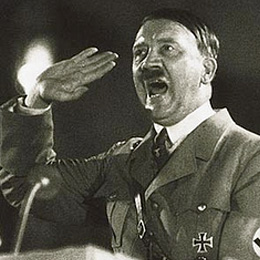 As German bombs fell on London and Nazi tanks rolled over US troops, Sosthenes Behn president and founder of the US based ITT corporation, met with his German representative to discuss improving German communication systems. ITT was designing and building Nazi phone and radio systems as well as supplying crucial parts for German bombs. Our government knew all about this, for under a presidential order, US companies were licensed to trade with the Nazis. The choice of who would be licensed was odd, though. While the Secretary of State gave the Ford Motor Company permission to make Nazi tanks, he simultaneously blocked aid to German-Jewish refugees because the US wasn't supposed to be trading with the enemy. Other US companies trading with the Third Reich were General Motors, DuPont, Standard Oil of New Jersey, Davis Oil Co., and the Chase National Bank. President Roosevelt did not stop them, fearing a scandal might lead to another stock market crash or lower US moral. Besides, the same companies that traded with Hitler were supplying the US with its armaments, and some corporate leaders threatened to withdraw their support if Roosevelt exposed them. Henry Ford was a good friend of Hitler's. His book - The International Jew - had Inspired Hltler's Mein Kampf. The Fuhrer kept Ford's picture in his office, and Ford was one of only four foreigners to receive Germany's highest civilian award. As for Sosthenes Behn, at the end of the war, he received the highest civilian award for service to his country – the United States of America. As German bombs fell on London and Nazi tanks rolled over US troops, Sosthenes Behn president and founder of the US based ITT corporation, met with his German representative to discuss improving German communication systems. ITT was designing and building Nazi phone and radio systems as well as supplying crucial parts for German bombs. Our government knew all about this, for under a presidential order, US companies were licensed to trade with the Nazis. The choice of who would be licensed was odd, though. While the Secretary of State gave the Ford Motor Company permission to make Nazi tanks, he simultaneously blocked aid to German-Jewish refugees because the US wasn't supposed to be trading with the enemy. Other US companies trading with the Third Reich were General Motors, DuPont, Standard Oil of New Jersey, Davis Oil Co., and the Chase National Bank. President Roosevelt did not stop them, fearing a scandal might lead to another stock market crash or lower US moral. Besides, the same companies that traded with Hitler were supplying the US with its armaments, and some corporate leaders threatened to withdraw their support if Roosevelt exposed them. Henry Ford was a good friend of Hitler's. His book - The International Jew - had Inspired Hltler's Mein Kampf. The Fuhrer kept Ford's picture in his office, and Ford was one of only four foreigners to receive Germany's highest civilian award. As for Sosthenes Behn, at the end of the war, he received the highest civilian award for service to his country – the United States of America. |

 |
|  |



